Exam 3
- Do course evaluation
- Review for class 26
- AEFIS Course evaluation (10 bonus) points
- Exam #3 on Friday
- Half on exam 1+2 and half on after that
- More questions then less challenging per question
- Can keep same partners or switch
- Redo exam 1 and 2, and in-class assignments
Review
Quantum Physics- Language of life at the nanoscale
Math Background
- Complex #‘s, Eulers formula;
- Solving PDE’s
- Ansatz
- Boundry Condititions
- Seperation of variables
Light as a wave
- Solution to wave problem with ansatz
- Interference problems
- Double slit problem
- Constructive Interference
- Maxima and Minima
- Single Slit problem
- Large central maxima (~20x surrounding)
- M is for minima, N is for maxima
X-Ray diffraction from crystals
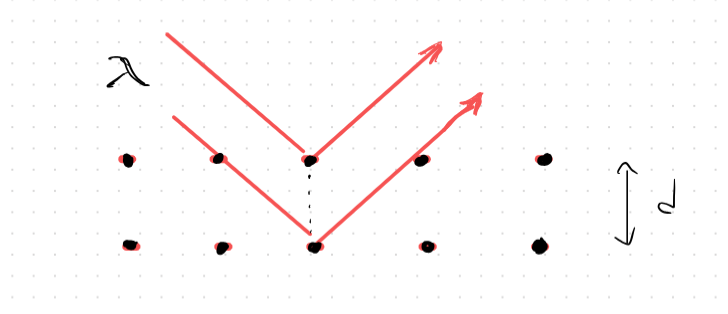
- Using diffraction and interference to find lattice constant of materials
- is lattice constant
Photoelectric experiment
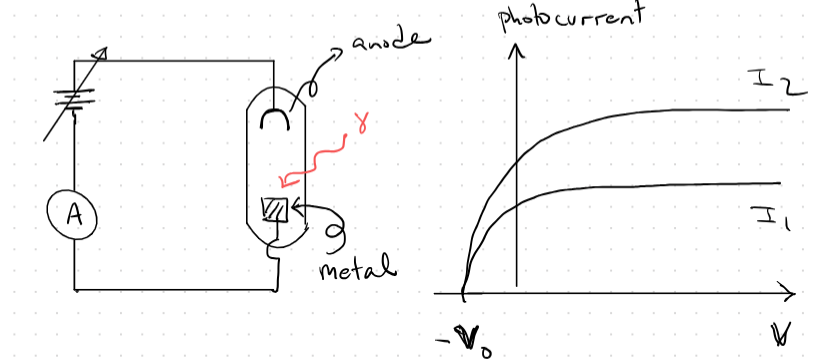
- Evidence that light is made of photons
- Increasing intensity does not increase current
- Where work function of material (constant based on material
- Max energy on left, kinetic energy + work constant on right
Wave nature of matter
- De Broglie wavelength:
- Interference of matter
- Rough estimate of uncertainty principle
Schrodinger equation
- Clever guess by Schrodinger
- First term is kinetic energy , second is potential, right hand is total
- Hamiltonian is right hand side
- Momentum Operator is given by
- Typical guess for particle in free space (no potential)
- Normalization
- Classically you can track the position of things, quantum mechanically yields the probability that is at a given location
- If you have an uncertainty of position you cant follow the trajectory
- Psi encodes the information about the object
- Probability Density is
- Depicts how probability changes over space. Can be used to find most probable location for particle.
- Probability Density times infinitesimal distance is probability
- Integrating free space guess over all space
- Integrating 1 over all space is infinity, using a wave packet prevents this
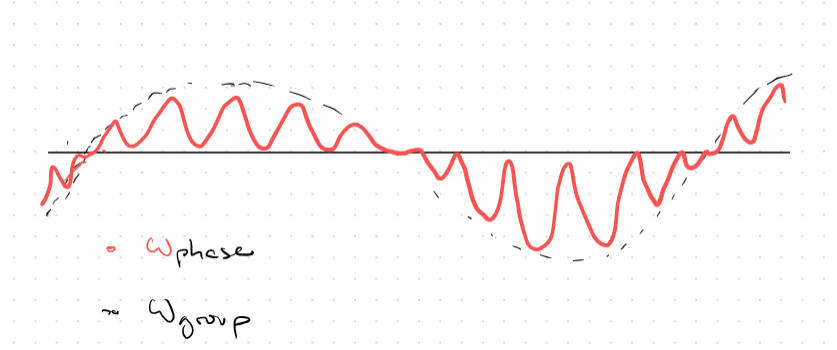
- Group vs Phase velocity
- Wave function
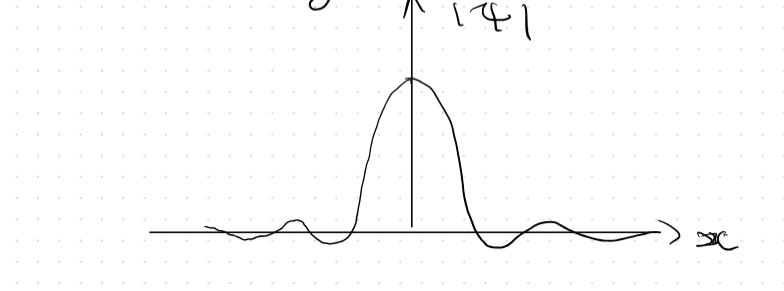
- Gaussian-Like distribution
- Oscillations at edges are wrong for Gaussian
Quantum Mech. Basics
- Expectation value is given by
- Uncertainty is given by
Time independent S.E
- Using separation of variables see Time independent Schrodinger equation
- See also -time evolution
Functional Vector Space
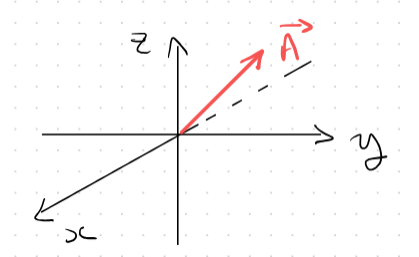
Energy Eigenvalue Problem
Gives you energy for an eigenvector
Bound state problems
- 3 main types
- Infinite Square well
- Harmonic Oscillator
- Finite Square well
- Solutions for each
- Infinite Square well
Scattering from step potentials
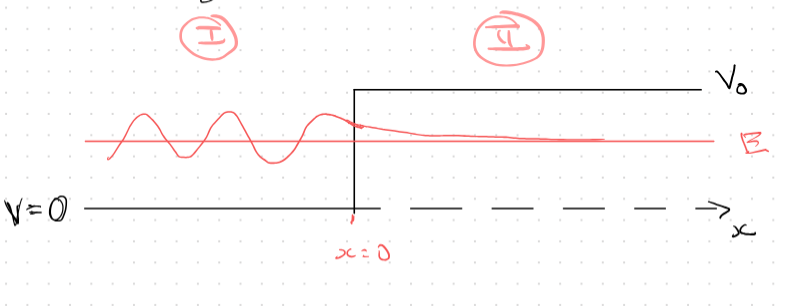
- Above is example with no reflection, quantum transmission (not tunneling)
 Example with potential less then energy
Example with potential less then energy - There is A, B, and C but no D because no energy is reflected off the infinite right side
Quantum Tunneling
Principles of QM
- Hermitian Operators
- Operators linked to observables
- Eigenfunctions orthogonal
- Form complete set
- Matrix representation
- No DiffEq representation of spin
- Spin emerges from Dirac equation (reviewed in IQM)
- Commutation Relations
3D Problems
- Cartesian vs Spherical cords
- Examples used are 3D box, H-atom
- Angular momentum
Angular momentum on z axis
$\hat{L}_{z}$ and $\hat{L}_{y}$ commute, but $\hat{L}_{x}$ and $\hat{L}_{y}$ do not
Hydrogen-Like atom
- Any particle with 1 electron is hydrogen-like. Neutrons and Protons don’t really matter. Multi particle systems not covered until grad level. Potential for HLS given by
Solution for R?
Energy levels given by:
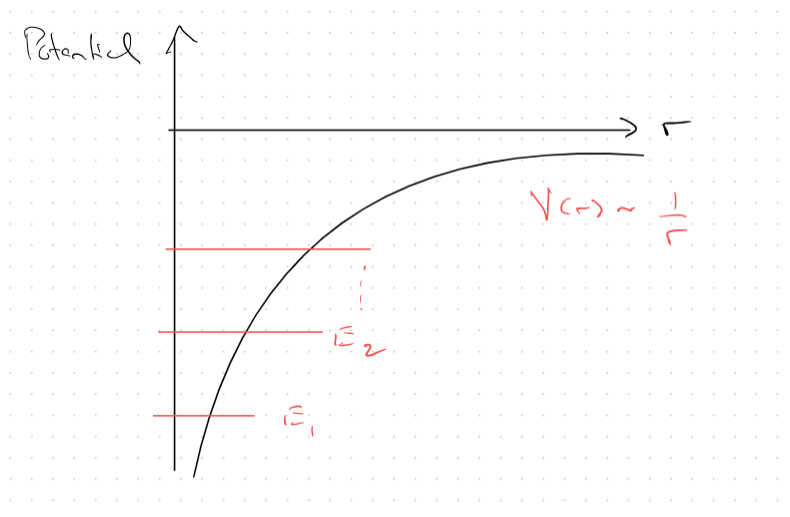
Coulomb Potential shown above. Bound state. N is quantum number for Particle is in bound state because E is less then V. See also 1 dimensional bound state.
Zeeman Effect
- Splitting of spectral lines due to magnetic field
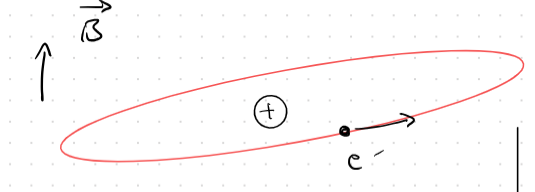
Intrinsic spin
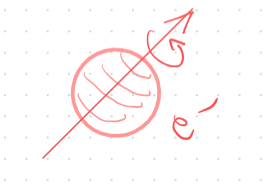
- Stern-Gerlach Experiment
- g-factor (fudge factor)
is the spin derivative of the hamiltonian
Qubits (Bloch Sphere)
The chi vector is a state in a Qubit Qubit is system of spin vectors? IBM Quantum Computer uses superconducting qubits